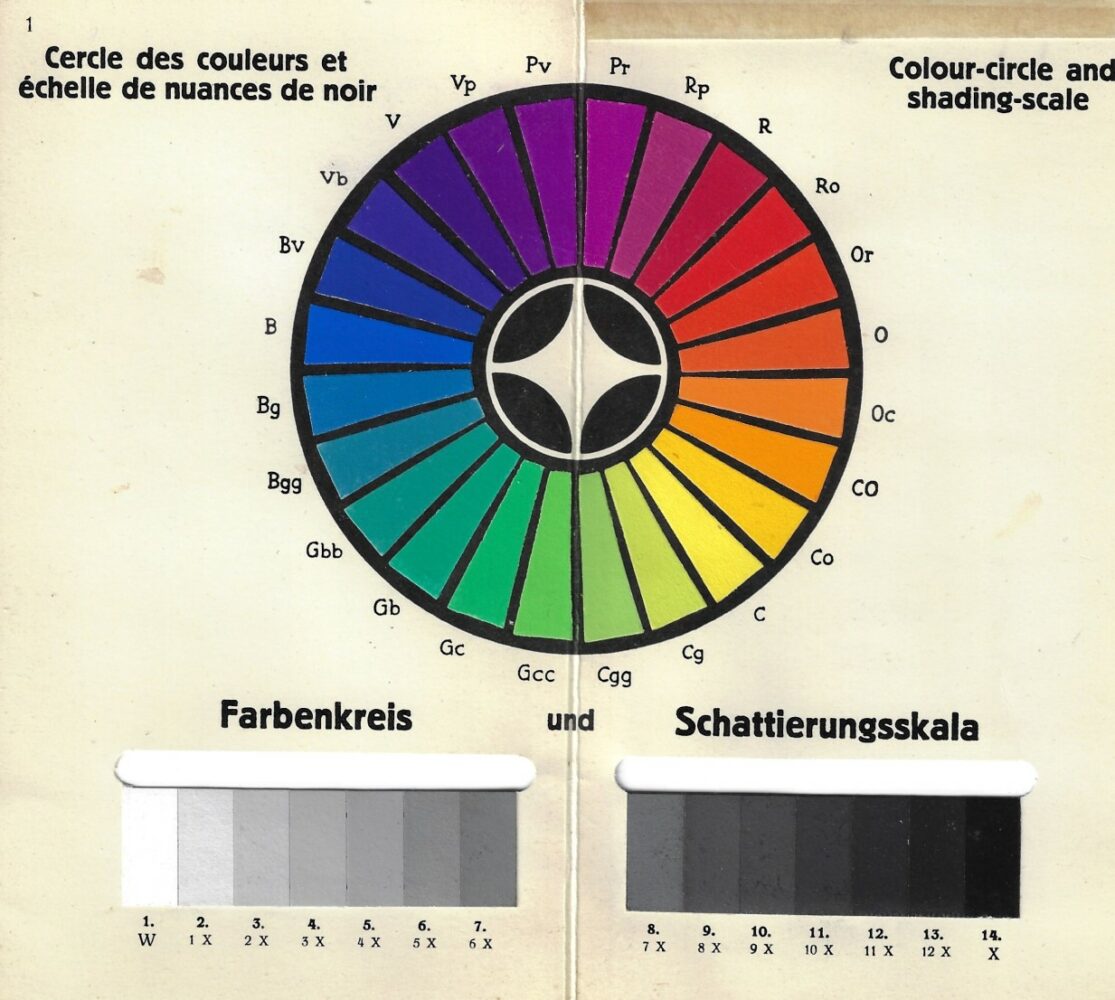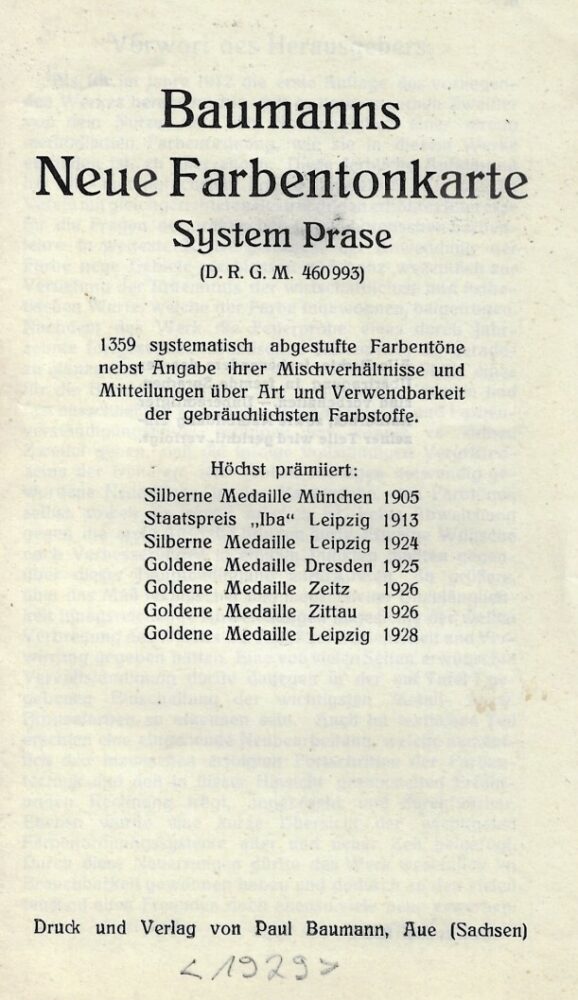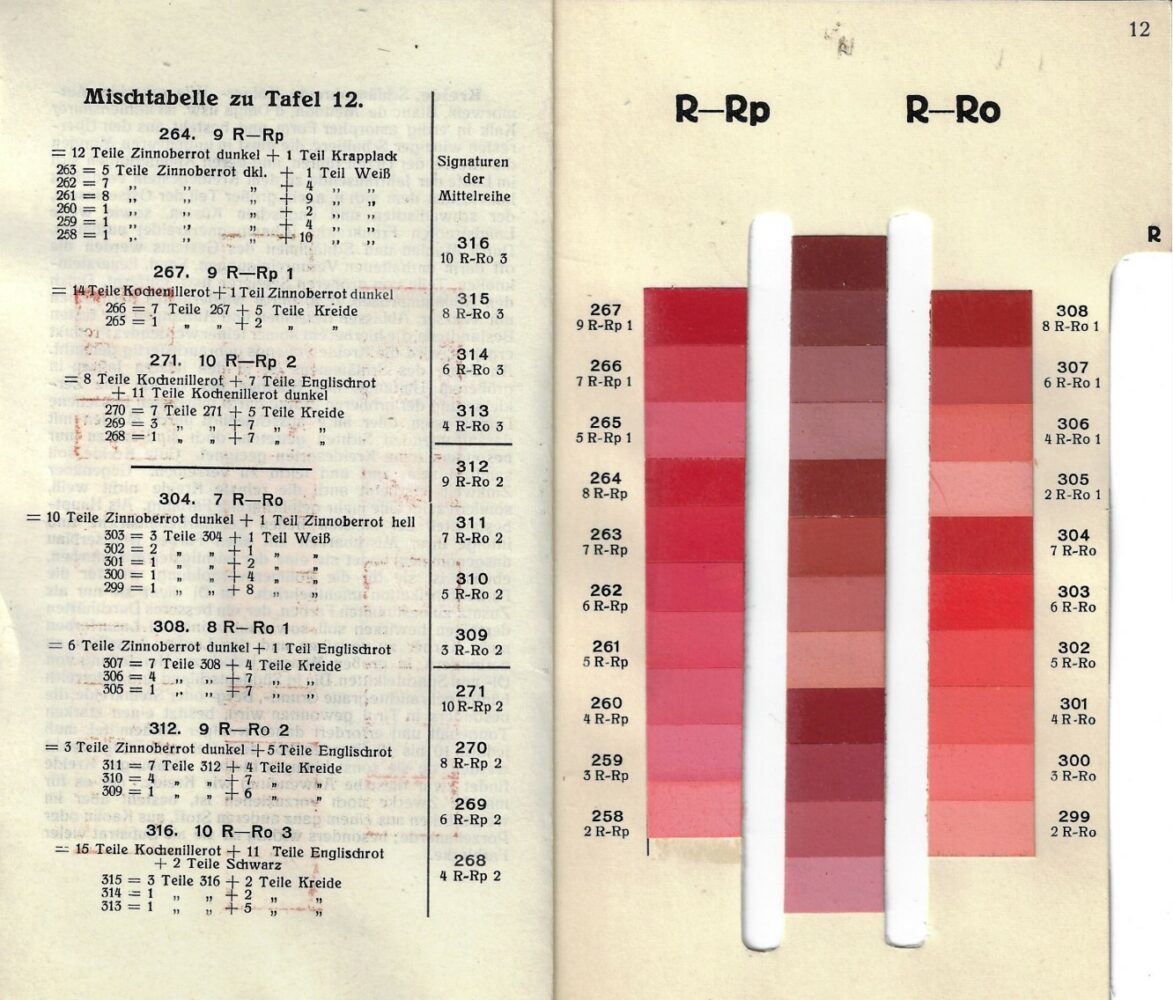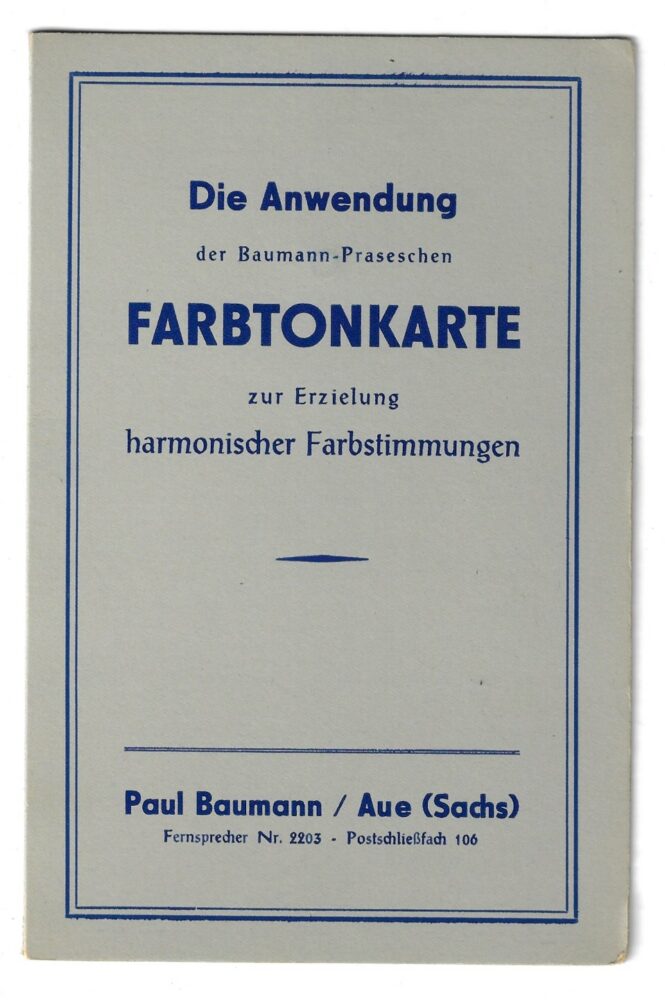Baumanns Neue Farbentonkarte
1928
verkauftBaumanns Neue Farbentonkarte [=title on title page; title on cover = Baumanns neue Farbtonkarte]. System Prase. 1359 systematisch abgestufte Farbentöne nebst Angabe ihrer Mischverhältnisse und Mitteilungen über Art und Verwendbarkeit der gebräuchlichsten Farbstoffe.
Aue (Sachsen), Druck und Verlag von Paul Baumann, without year of publication [not before 1928].
4 pages instructions, booklet xvi pages [with publisher’s preface signed Paul Baumann; introduction signed Otto Prase], 1 color circle and shading scale [= double plate 1-2], 47 plates. Plate numbering: 1-2 (double plate), 3 – 6, 6a, 7 – 47 with a total of 1359 color samples (so according to the publisher’s printed note inside cover complete). Attached to each plate 3-47 a sheet printed on both sides with explanations and color mixing data.
18 x 12 cm. Original glossy light brown wrappers with black lettering on cover and spine and small color cube pasted to front cover.
sold
In the bibliographical record and descriptive evaluation of this publication, we have tried to be accurate and not to repeat erroneous information in catalogs and offers in antiquarian and auction catalogs – I hope that we have been successful.
The present copy is the second edition of 1928 with the bronze fab tones on plate 7. „The second edition of the color chart system Prase 1928 shone thereby with twelve bronze tones as well as some textual improvements. In total, it now contained 1359 shades“ https://de.wikipedia.org/wiki/Otto_Prase
Paul Baumann (1869-1961) founded his company in 1912 in the Erzgebirge town of Aue together with the Otto Prase (1874-1956).
The year 1912 is often incorrectly given as the year of publication of the present work, the company foundation is usually dated in the specialist literature to 1912, but it is remarkable in this context that Baumann and Prase state that they had already been awarded a medal in Munich for their work in 1905.
Prase developed his own new color theory with instructions and recipes for mixing pigments, for which he was awarded many gold and silver medals at trade fairs (1905 Munich, 1913, 1924 and 1928 Leipzig, 1926 Zeitz and 1926 Zittau). On behalf of the Deutscher Werkbund, he supplied „for industrial use the best available tool for these purposes for industry, trade and craft“. The explanatory notes to plate 47 contain references to literature. The most recent publication date is 1926 (H. Trillich, Das deutsche Farbenbuch I-III, 1925/26). Among other titles cited are: Baumann-Prase, Neuer Farbenatlas 1922 and Baumann-Prase, Der Farbenfächer 1924.
Absolutely complete and very well preserved copy.
order number 002







